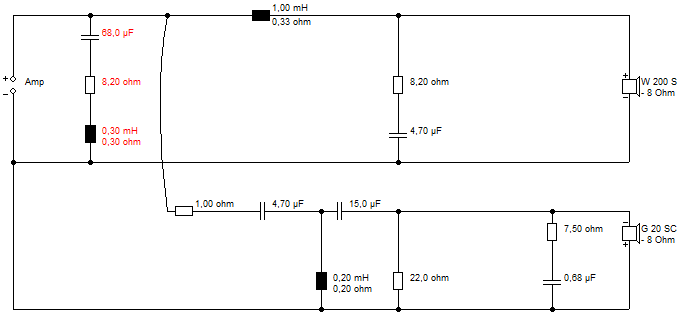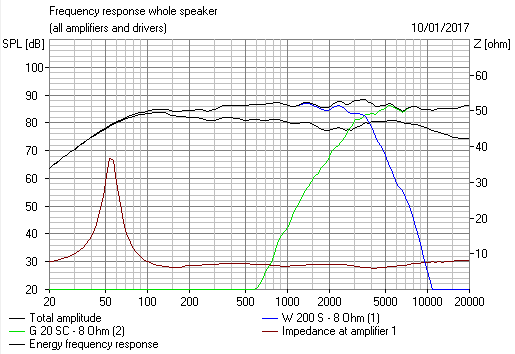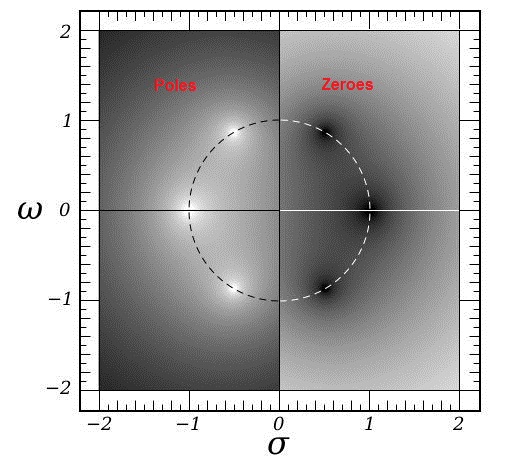When you look at a LCR circuit and want to know what it does at DC you short the Ls and open the Cs. The impedance of the C is infinite. At very high freqs other way around, the impedance of the L is practicaly infinite. So what do you do in the equation Vout=Z1/Z2 when Z2 is infinite, like a cap,at DC? And Ive never heard of "extended" numbers.
Last edited:
The "book" Network Analysis and Synthesis by Kuo can be found here for free. EasyEngineering Networks – An Online Educational Portal – EasyEngineering
2 chapters on laplace transforms, lots of pole zero stuff. Need to know imaginary numbers. Calculus not essential but sure helps.
2 chapters on laplace transforms, lots of pole zero stuff. Need to know imaginary numbers. Calculus not essential but sure helps.
I had never heard of extended complex numbers either, but according to Wikipedia it is the combination of the complex numbers and infinity.
The classical way to deal with infinity is to regard it as a symbol rather than a number. Because it is no number, you can't do normal calculations with it. An expression like 1/0 is then meaningless, but stating that the limit of 1/x approaches infinity as x decreases to zero simply means that the expression 1/x increases without bounds as x gets smaller and smaller. My secondary school mathematics teacher Van Deene was very strict with this.
From this point of view, stating that the impedance of a capacitor is infinite at zero frequency is just a sloppy way of saying that the limit for f -> 0 of the magnitude of the impedance is infinite. Mr. Van Deene would certainly disapprove of such a sloppy way of expressing oneself.
I know that there are number systems that include infinity as a number, like the extended complex numbers. Those have their advantages and disadvantages. I like to avoid them when it is not too difficult to do so.
The classical way to deal with infinity is to regard it as a symbol rather than a number. Because it is no number, you can't do normal calculations with it. An expression like 1/0 is then meaningless, but stating that the limit of 1/x approaches infinity as x decreases to zero simply means that the expression 1/x increases without bounds as x gets smaller and smaller. My secondary school mathematics teacher Van Deene was very strict with this.
From this point of view, stating that the impedance of a capacitor is infinite at zero frequency is just a sloppy way of saying that the limit for f -> 0 of the magnitude of the impedance is infinite. Mr. Van Deene would certainly disapprove of such a sloppy way of expressing oneself.
I know that there are number systems that include infinity as a number, like the extended complex numbers. Those have their advantages and disadvantages. I like to avoid them when it is not too difficult to do so.
CharlieLaub probably explained my understanding of Pole-Zero stuff as well as anybody else:

It's a valid way to understand the Fourier Transform. Sine waves an' all that. But, Fourier is not the only game in Town.
How it works if if you regularly filter a loudspeaker, you end up with some anomolies in phase and time delay.


I really don't want to go into all the subleties: It's Cauchy's function of a complex variable.

That is a 6th order All-Pass network. BW6. Flat frequency response. Quite realisable with op-amps and a few resistors and capacitors. Pure phase or time-delay. We could never hear the audible effects. But the Poles are always on the left in the Real World. Slopes, Phase and Time Delay are interrelated by a differential relationship in the Hilbert Transform.

It's a valid way to understand the Fourier Transform. Sine waves an' all that. But, Fourier is not the only game in Town.
How it works if if you regularly filter a loudspeaker, you end up with some anomolies in phase and time delay.
I really don't want to go into all the subleties: It's Cauchy's function of a complex variable.
That is a 6th order All-Pass network. BW6. Flat frequency response. Quite realisable with op-amps and a few resistors and capacitors. Pure phase or time-delay. We could never hear the audible effects. But the Poles are always on the left in the Real World. Slopes, Phase and Time Delay are interrelated by a differential relationship in the Hilbert Transform.
Last edited:
I had never heard of extended complex numbers either, but according to Wikipedia it is the combination of the complex numbers and infinity.
The classical way to deal with infinity is to regard it as a symbol rather than a number. Because it is no number, you can't do normal calculations with it. An expression like 1/0 is then meaningless, but stating that the limit of 1/x approaches infinity as x decreases to zero simply means that the expression 1/x increases without bounds as x gets smaller and smaller. My secondary school mathematics teacher Van Deene was very strict with this.
From this point of view, stating that the impedance of a capacitor is infinite at zero frequency is just a sloppy way of saying that the limit for f -> 0 of the magnitude of the impedance is infinite. Mr. Van Deene would certainly disapprove of such a sloppy way of expressing oneself.
I know that there are number systems that include infinity as a number, like the extended complex numbers. Those have their advantages and disadvantages. I like to avoid them when it is not too difficult to do so.
What would your physics teacher say?
So what is the impedance of a perfect cap at DC' not aproaching DC, which is zero hertz?
Calculas is built on limits aproaching zero, including 1/zero.
I don't know what people find difficult about complex numbers. The most natural things in the World if you believe -4 has a square root. Er, 2j, IIRC... . 😀
In our lowly Audio forum. we are just trying to build a decent speaker.
Not rocket-science AFAIK. More interestingly we ought to seek out an Algebra that includes Quantum Mechanics. Non-Commutative. Probably the "H" Quaternions:
Quanta Magazine
But doesn't quite hack it into the higher Realms of Quarks and the Higgs Boson. For that we might need "O" Octonions:
Quanta Magazine
But for speakers, we'll probably get away with the second divisional Clifford Algebra of "C". The first one being "R".
In our lowly Audio forum. we are just trying to build a decent speaker.
Not rocket-science AFAIK. More interestingly we ought to seek out an Algebra that includes Quantum Mechanics. Non-Commutative. Probably the "H" Quaternions:
Quanta Magazine
But doesn't quite hack it into the higher Realms of Quarks and the Higgs Boson. For that we might need "O" Octonions:
Quanta Magazine
But for speakers, we'll probably get away with the second divisional Clifford Algebra of "C". The first one being "R".
Much appreciated 🙂It took me awhile but I managed to track it down for you. See post #8 in this thread:
How to correct phase for IIR filters
What would your physics teacher say?
So what is the impedance of a perfect cap at DC' not aproaching DC, which is zero hertz?
Calculas is built on limits aproaching zero, including 1/zero.
I never asked them, neither mr. Zuidema nor mr. Mouthaan. I do remember that Mouthaan's treatment of limits was consistent with Van Deene's, though, although they disagreed about who invented limits, a physicist or a mathematician. My now retired colleague Frank Verwaal would say that DC is unphysical in a universe with a finite lifetime, and that any frequency smaller than the reciprocal of the time to his retirement was of no practical importance to him.
I think they are limits. For example, when you say that the DC bias voltage at a certain node of an amplifier is 5 V, that means that when you connect a meter to that node and turn the amplifier on without any input signal, the voltage will get closer and closer to 5 V with time (at least when you assume the meter doesn't affect the voltage, there are no tolerances and no measurement inaccuracies and so on).
- Home
- Loudspeakers
- Multi-Way
- Pole-Zeros